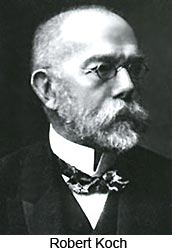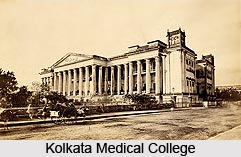 Cholera research in British India started up as an emergency duty, with patient deaths increasing by the day. Experiments were conducted to identify the root cause of the intensely infectious disease. The case was even deadly and widespread in the rural areas. Money was being put in for through research in cholera, with British scientists examining the disease carriers and patients the mortality rate. Success soon came their way.
Cholera research in British India started up as an emergency duty, with patient deaths increasing by the day. Experiments were conducted to identify the root cause of the intensely infectious disease. The case was even deadly and widespread in the rural areas. Money was being put in for through research in cholera, with British scientists examining the disease carriers and patients the mortality rate. Success soon came their way.
Within the period of 1883-84, the German bacteriologist Robert Koch (1843-1910) discovered the specific cause of cholera in the comma bacillus while working in Egypt as a member of the German Cholera Commission. In February 1884, the German Commission proceeded to Calcutta where it confirmed the comma bacillus as the cause of cholera when it was found in a water tank in Calcutta.
In December 1884, the Government of India directed the establishment of India`s first medical laboratory at the Calcutta Medical College. Dr. David Douglas Cunningham (1843-1914) was appointed as its first director and granted 15,000 rupees to study cholera. A headway was smoothly achieved towards scientific researches under British India with the said establishment amongst common man.
 In 1888, following the work of Koch, the English Cholera Commission was established under the leadership of British bacteriologists, Dr. Edward Kllen and Dr. Heneage Gibbs. Their findings appeared to weaken and cloud Koch`s thesis. However, from 1890 onwards, a better understanding of the aetiology of cholera allowed the medical profession in India to accept the comma bacillus as water-borne. This understanding renewed greater interest in the provision of clean water.
In 1888, following the work of Koch, the English Cholera Commission was established under the leadership of British bacteriologists, Dr. Edward Kllen and Dr. Heneage Gibbs. Their findings appeared to weaken and cloud Koch`s thesis. However, from 1890 onwards, a better understanding of the aetiology of cholera allowed the medical profession in India to accept the comma bacillus as water-borne. This understanding renewed greater interest in the provision of clean water.
Within the months of April 1893 to July 1895, Waldemar M. W. Haffkine (1860-1930) traversed India testing an anti-cholera vaccine on 294 British officers, 3206 British soldiers, 6629 Indian soldiers, 869 European civilians and 31,056 Indians with mixed results. A second experimental phase acquired considerable success. It becomes sufficiently clear that cholera was taken up a deadly disease, running the risk of mortality. Indians were more prone to it owing to lack of knowledge; as such, scientific researches by British medical men helped a lot to accentuate recovery.
Within the years of 1906-15, Leonard Rogers (1868-1962) investigated various treatments for cholera patients at the Calcutta Medical College Hospital. He effected the reduction of cholera death rates from 80 percent to 14 percent through the use of hypertonic saline and permanganates. He established at Bombay a laboratory for the production of vaccine against cholera.



















